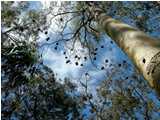Weaver news
Weaver Wednesday 4 [287] - Weaver themes [24]: Discovery of Weavers course - UCT Summer School2017-12-13 (812)
Weaver Wednesday 4: Weaver themes (Series)
Discovery of Weavers course - UCT Summer School
Learn about the discovery of weavers - the species, and the people. The people include collectors (hunters, explorers, and naturalist scientists), authors, and artists. Title: Weaver birds: from Linnaeus to the present (Course no. 1042) Dates: 22-26 January 2018, 9h15-10h15 daily, at UCT Middle Campus, Rondebosch This course will discuss the discovery of the weaverbirds, a family of about one hundred and twenty species found mainly in Africa. The weavers were formally described from 1758, but some were known about long before Linnaeus. An essential part of the discovery of weavers was the work of museum professionals who received a large influx of specimens that needed to be sorted and compared to other specimens and literature descriptions before new species could be described. By the early 1900s a large number of birds were still being described, however these were largely subspecies. Although the rate of new species descriptions slowed down in the twentieth century, new genetic techniques are resulting in new species being named, or in subspecies being upgraded to species level. While the focus of the course will be on weavers, much of the material is relevant to other birds. Lectures:
To register: UCT Summer School |










